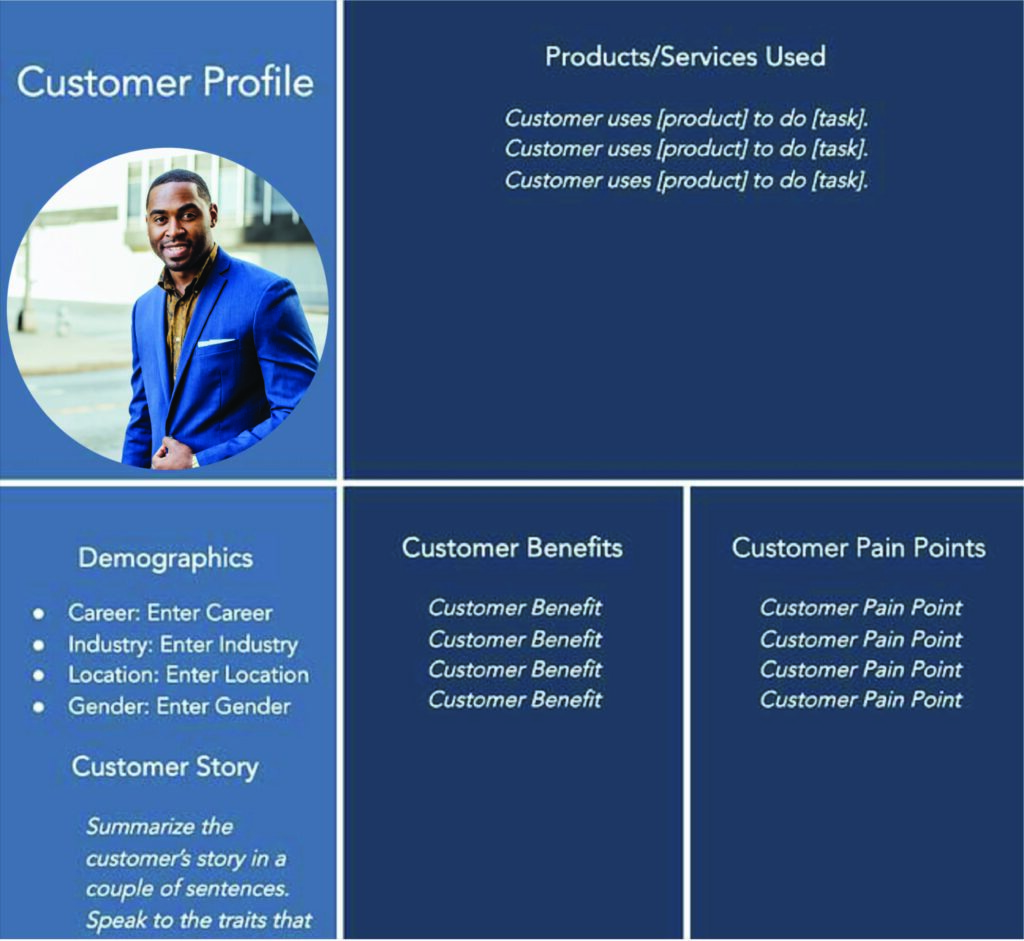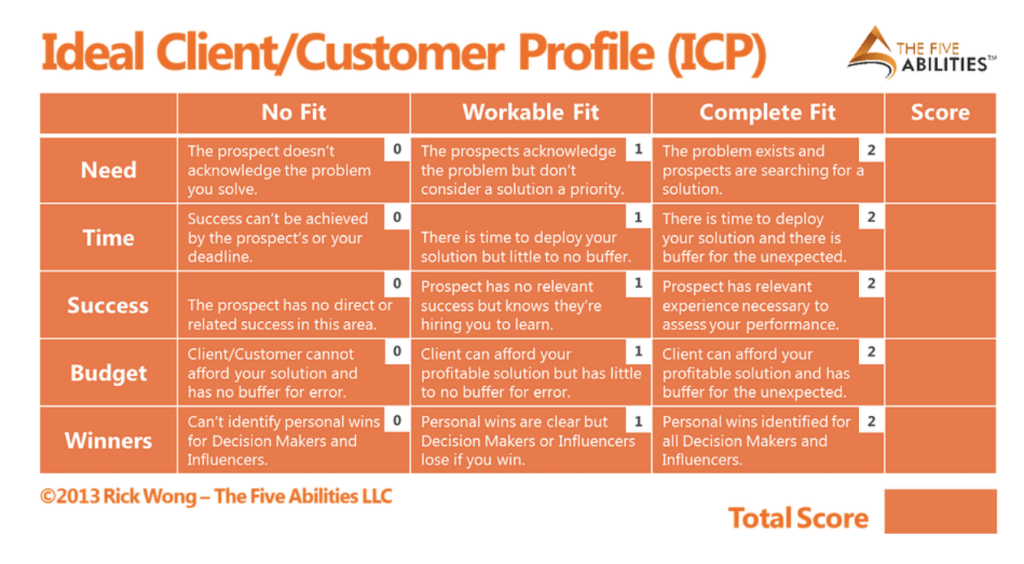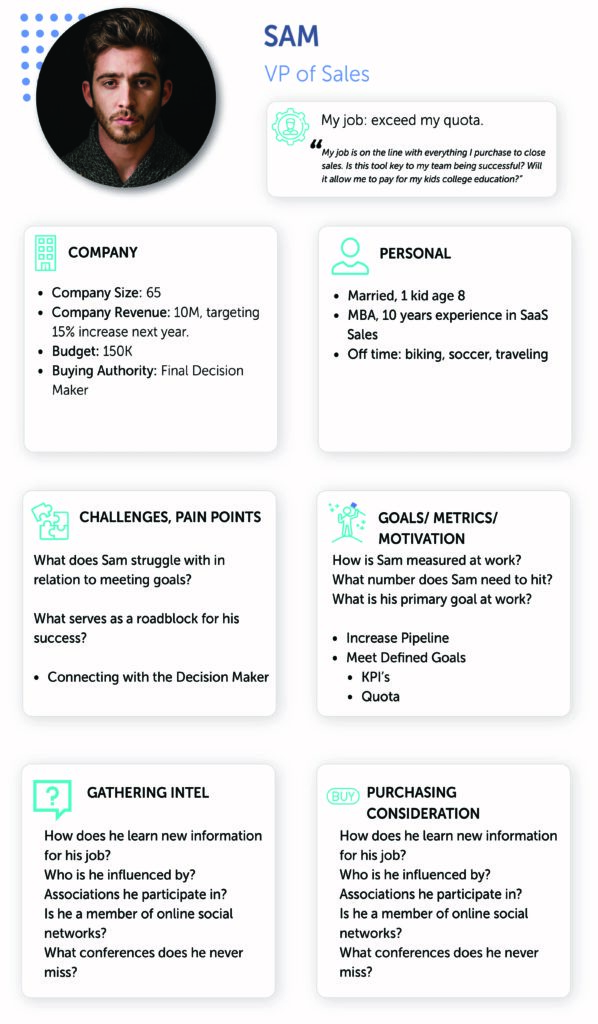In conversation, we adjust our message for different people. For example, discussing a topic with your colleague will be different than discussing it with your mother and different again for your boss. You discuss the same topic with three different people in a way that is best understood by each. This is what buyer personas are all about.
Ideal client profile (ICP) is about understanding your audience, whom you should target, and how to communicate with them. An ICP embodies the characteristics of a person who is most likely to appreciate your brand proposition, listen to your message, invest in your brand, and recommend your brand to others.
Creating your ICP can reduce the risk of targeting your sales and marketing campaigns to a generic audience. Approaching prospects with generic messaging leads to wasted effort and lost opportunities. An ICP helps you identify the characteristics and purchasing patterns of current customers. Based on this data, you can effectively target the right audience with the right messaging.
While creating an ICP involves several steps, there are crucial considerations you need to consider.
Dive Into the Right Data
The ICP must connect to your customer data to differentiate between good and bad leads. Consider what particular data you need by first determining who your “best” customers are. You can identify your “best” customers with these questions:
- Who are your most lucrative customers?
- Have they given you any feedback?
- How long do they stay with you?
- What is their lifetime customer value (LCV)?
- Is it a pleasure to work with them?
Narrow down the primary categories that will be utilized in the ideal client template based on what is most important to your business. Get the basics, but also dive into their motivations and ambitions. Pinpoint why they value your products and services. Finding the common thread among your “best” consumers brings you closer to determining the optimal profile.
Examples of categories include:
- Company data: basic information about their firms, including their industry, marketing budget, and size.
- Goals and difficulties: determine their top goals, largest triumphs and disappointments, and expectations for the near future.
- Purchasing decisions: explain why they choose your organization over others — what distinguishing features does your brand provide? What are their teams’ buying decision-making processes?
Get the Data From A Reliable Source
Surveys can be inaccurate and time taking. When you ask your prospects for more information through emails or on the phone, they may or may not provide complete information. This is a natural human tendency as they might not have reached the stage where they can share complete information freely.
If you want to cut down the time executing a survey, you can partner with a reliable B2B data partner who can provide deeper insights into your prospects. Choosing the right B2B data provider takes time as you need multiple discussions to evaluate the alternatives. A reliable data provider refers to one who offers a relevant, verified, and complete set of must-have data, mainly – firmographic data.
More Things to Consider…
ICPs are commonly perceived as restrictive, although they may be liberating in most circumstances. You’d no longer have to question if you’re focusing your resources on the correct people or if you’re being tugged in different directions to make the same decisions repeatedly.
That doesn’t imply there aren’t any stumbling blocks in the way. When developing the ICP, avoid falling into any of the following pitfalls:
- There is no wishful thinking –
Visualizing is OK, but you can’t create the ICP without a plan. Your ideal client should always be based on your “best” existing customers – those who already use your product or service and are well-organized to serve.
- Don’t be overly restrictive –
Instead of a true-to-life portrait of a single person, the ICP should be a comprehensive representation of your ideal customer base, including a collection of individuals’ attitudes, habits, and interests.
- Avoid developing too many personas –
While there are frequently several personas inside a single ICP, your customers aren’t that distinct– they face comparable difficulties, have similar goals, and have similar motives for associating with you.
Create Your Profiles
When you’re finished, take your findings and begin creating a profile using:
- Demographic
- Background
- Goals
- Challenges
- Objections
- Buying process
When the ICP is complete, give it to team members who work with customer data daily. This includes not just marketing and sales but also product and customer success departments. Encourage these entities to support the ICP so that they may focus their time and resources on the proper consumer.
Ideal Client Profile Examples
Here are some ICP examples that you might find useful. Perhaps these examples will inform the creation of your own ICPs and help you get started.
1) Profile with Personal Information –
Let’s get started by reviewing a simple ICP template.
As you can see, it just covers the most basic and crucial information. Such a persona is appropriate if you like to keep things simple.

2) Profile with Customer’s Interests
Map out this customer’s preferences based on demographics, psychographics, behavioral, and factors such as age, interests, work position, gender, geography, and more.

3) Profile with Abilities –
While it is normal for businesses to believe that their solutions can benefit everyone, this does not indicate that everyone is a suitable fit. An Ideal Customer Profile will help you select where to focus your selling and marketing efforts. Here’s an ideal client profile from The Five Abilities.

According to this ICP template, you should consider the following things:
- Need for your product or service?
- Time to deploy and get the most out of your offer
- Success
- Budget for the unpredictable situations
- Winners, who benefit personally when you win?
Choose an optimum score to consider the prospects as your ideal customer.
To score the lead or prospect, you can consider three categories – No Fit, Workable Fit, and Complete Fit. Let’s consider scoring your prospect or lead based on the need. You have sent an email with what problem you solve. Now there are the following three situations that will decide if the prospects can be scored for complete fit or no fit:
- If the prospect doesn’t acknowledge the problem you solve, they are not the right fit so the score will be 0.
- If the prospect acknowledges the problem but doesn’t have the immediate need for the solution, you can score them as 1.
- If the prospect acknowledges the problem and is looking for the solution, the score will be 2.
(The template shows the situations for other parameters.)
If the prospects score beyond the optimum ICP score (say 6), you should focus your sales and marketing efforts to target them.
4) Profile with 360 Detailing
This kind of customer profile is one that has a lot of details. The demographics, firmographic data, source of research, challenges/ pain areas, preferred way of communication, and more. Here’s what it looks like.

Get Started and Keep Improving
There is no simple template or ICP generator (at least not for the sort of ICPs we’re discussing).
Determining your ICP necessitates delving into your own data. The good news is that you only have to do it once.
Sorry, but no.
Part of the reason ICPs are so effective is that they are based on data that changes.
This implies you should re-evaluate your ICP at least once a year or after any significant changes to your product.
Now that you understand how to use an ICP for business, get started with SalesIntel for your data research.




